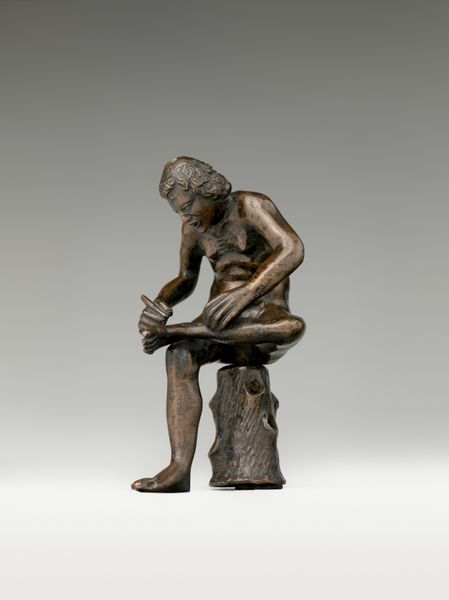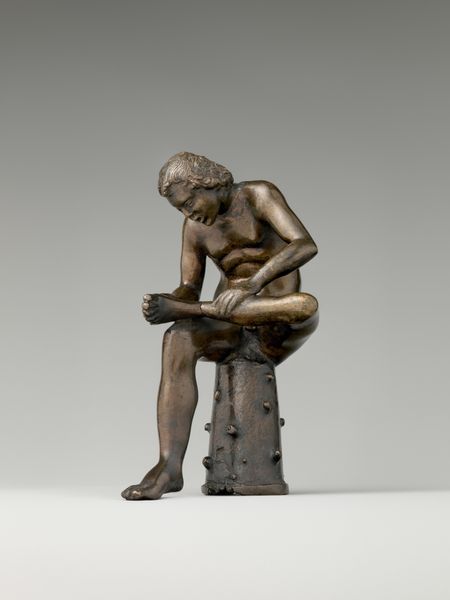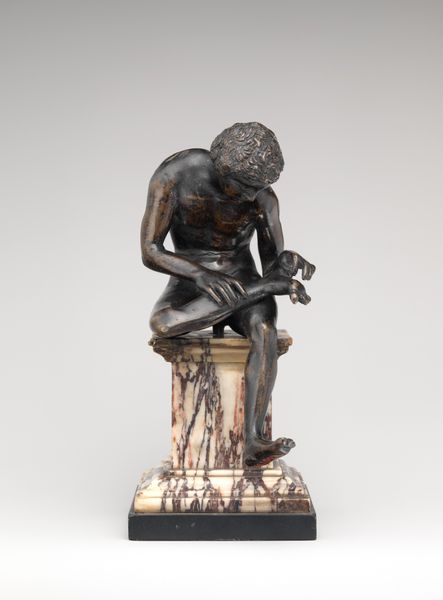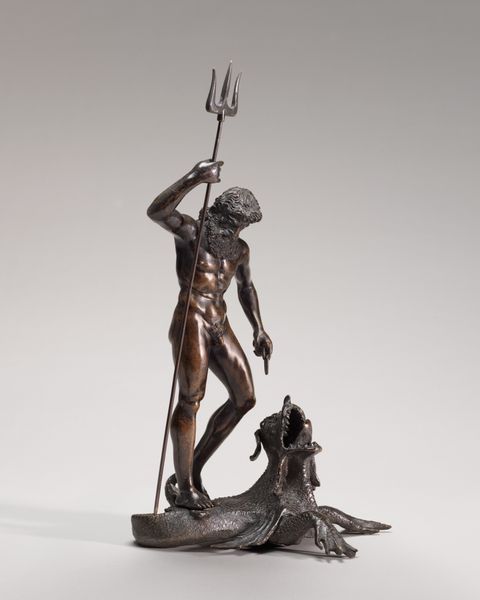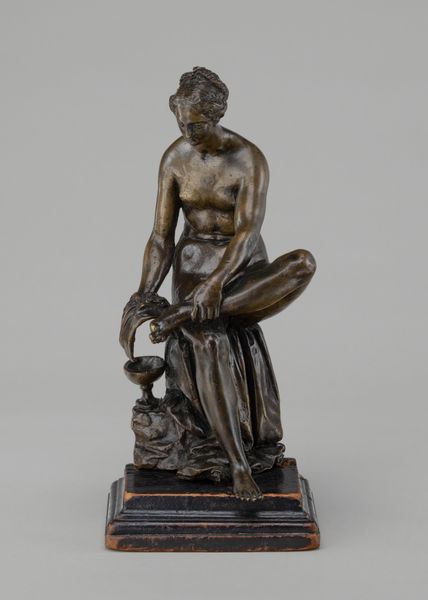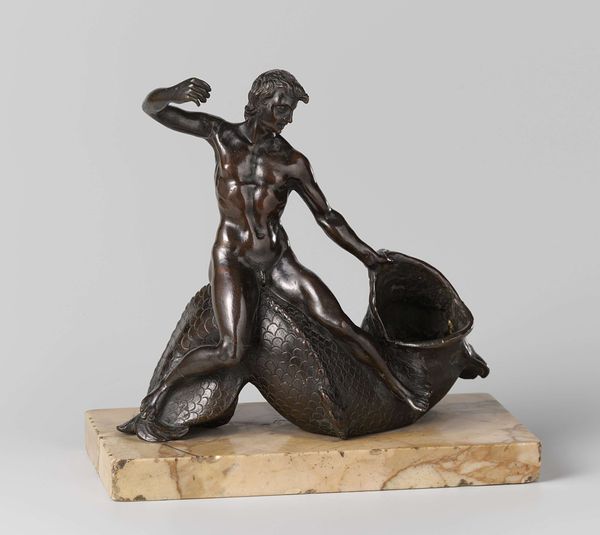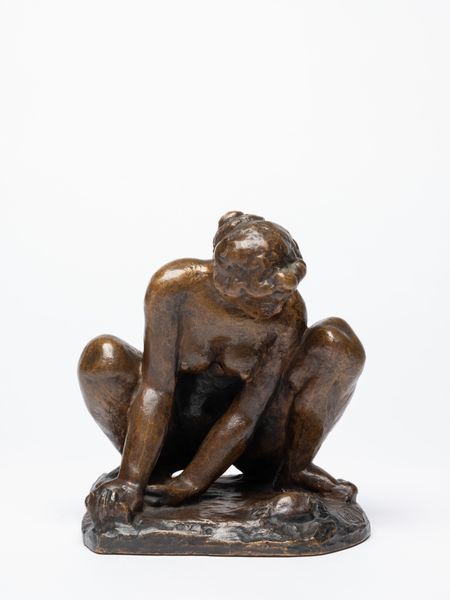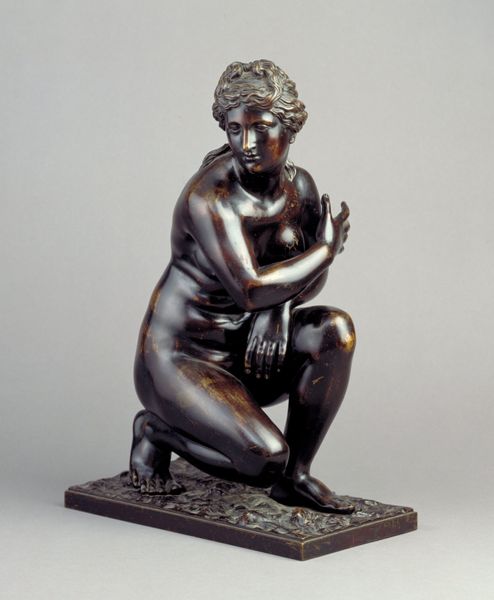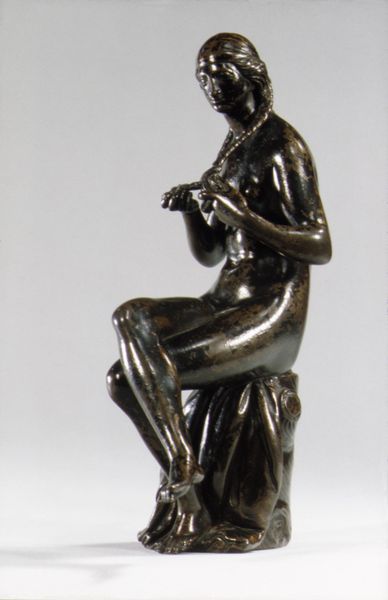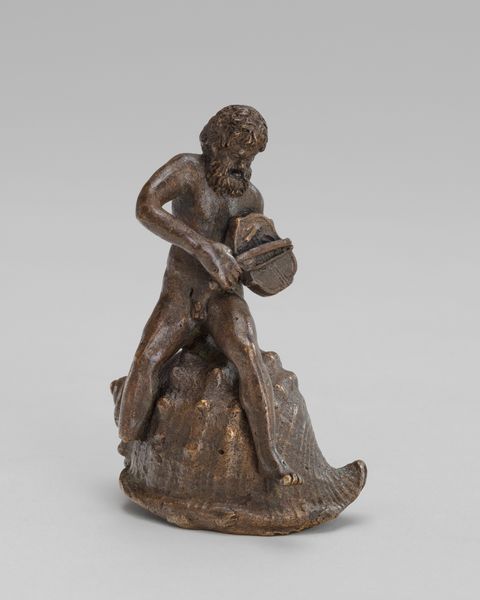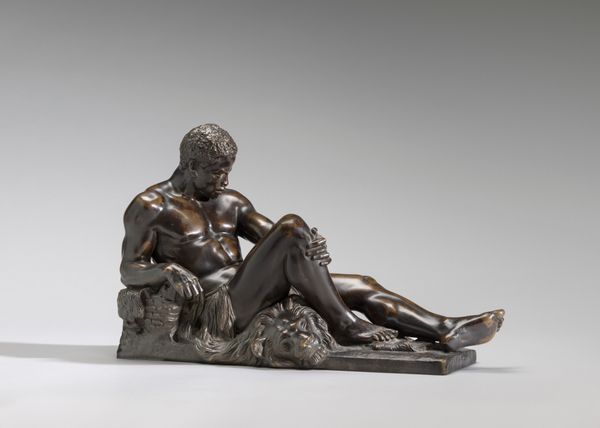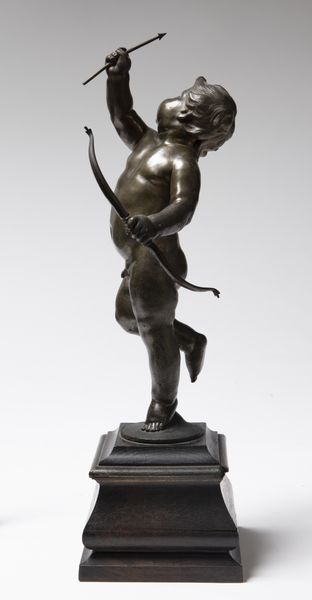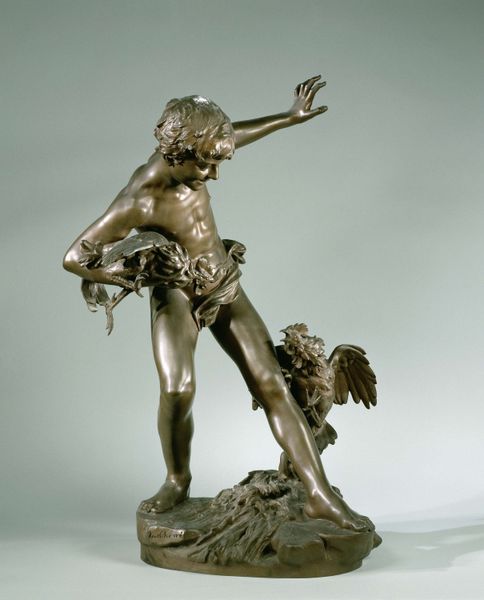
bronze, sculpture
#
portrait
#
sculpture
#
bronze
#
sculpture
#
academic-art
#
realism
Dimensions: 15 cm (height) x 8.1 cm (width) x 15 cm (depth) (Netto)
Editor: Here we have Vilhelm Bissen's bronze sculpture, "A Nude Boy Sitting and Fishing," created in 1856. It strikes me as quite a traditional piece. What can you tell us about the context surrounding its creation? Curator: Bissen, though Danish, was deeply influenced by the classical tradition prominent throughout Europe. His sculpture aligns with the 19th-century academic art style, and its realism evokes specific expectations regarding public statuary. It's vital to ask: What role did sculptures like these play in shaping public morality and ideals in that period? Editor: So, it was less about individual expression and more about representing broader cultural values? Curator: Precisely! Think about where these pieces were typically displayed. Often, it was in public spaces – parks, museums, government buildings. This piece likely aimed to promote ideals of youthful virtue, patience, and a connection to nature, reflecting the values that society wanted to project onto its citizens, or even to emulate Greco-Roman styles of idealism. Consider the "nudity" - did that also evoke ideas, historical or mythical? Editor: That’s fascinating. I hadn't thought about it in terms of actively shaping society. It is like a very specific snapshot of the era's mindset, isn’t it? Curator: Exactly! Looking closely, what message does this boy send in our own era? This bronze sculpture speaks volumes, beyond merely the artistic talent involved. Editor: This has given me a new lens for understanding 19th-century art. It’s more than just pretty objects. Curator: Indeed, the sculpture acted almost like social architecture, building or supporting dominant ideologies of its time.
Comments
No comments
Be the first to comment and join the conversation on the ultimate creative platform.
